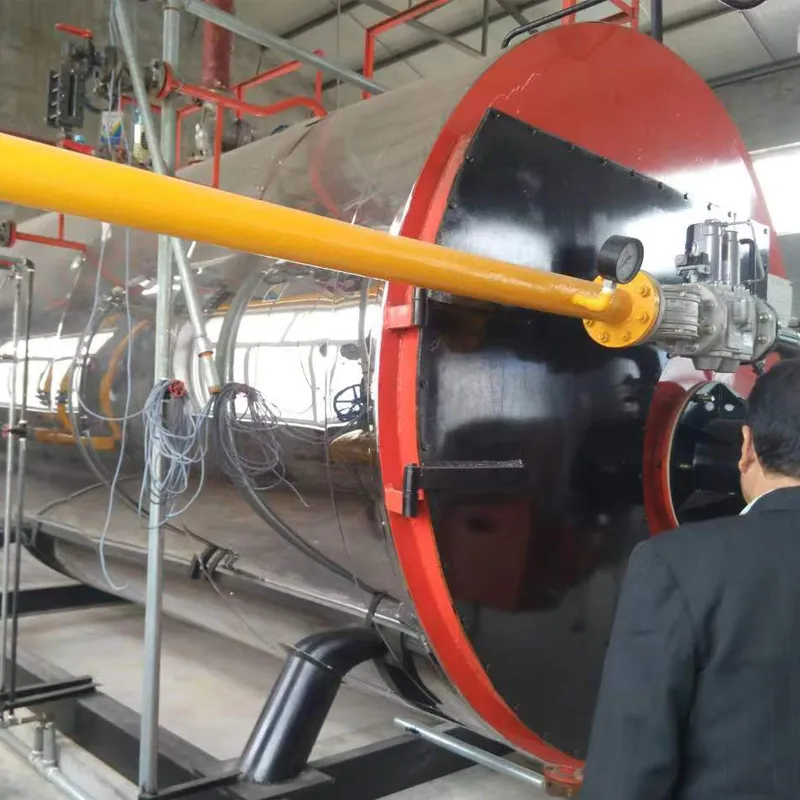
ພ.ພ. . 30, 2025 07:51 Back to list
Steam Boiler Safety Valves High-Pressure Relief & Durability
- Introduction to Steam Boiler Safety Mechanisms
- Technical Specifications and Performance Metrics
- Leading Manufacturers in Safety Valve Production
- Custom Solutions for Diverse Industrial Needs
- Case Studies: Real-World Applications
- Maintenance Best Practices
- Future Trends in Steam Boiler Safety

(steam boiler safety valve)
Understanding the Critical Role of Steam Boiler Safety Valves
Steam boiler safety valves are non-negotiable components in industrial systems, designed to prevent catastrophic failures by releasing excess pressure. These devices ensure operational continuity while adhering to global standards like ASME Section I and ISO 4126. A single malfunction can lead to downtime costing up to $500,000 per hour in high-risk sectors such as power generation or chemical processing. Modern safety valves integrate advanced materials like stainless steel alloys and precision machining to handle pressures exceeding 2,500 psi.
Technical Advancements Driving Reliability
Contemporary steam boiler safety devices leverage spring-loaded mechanisms and pilot-operated designs to achieve ±1% pressure control accuracy. For instance, valves with API 526 certification demonstrate a 99.98% failure-free rate across 10,000 cycles in third-party tests. Key innovations include:
- Corrosion-resistant coatings for extreme-temperature environments
- Wireless monitoring systems for predictive maintenance
- AI-driven pressure adjustment algorithms
Market Leaders and Competitive Benchmarking
| Manufacturer | Max Pressure (psi) | Response Time | Certifications | Warranty |
|---|---|---|---|---|
| Company A | 3,200 | ≤15 ms | ASME, PED | 5 years |
| Company B | 2,800 | ≤25 ms | ISO 4126 | 3 years |
| Company C | 3,500 | ≤10 ms | ASME, TÜV | 7 years |
Tailored Configurations for Industry-Specific Demands
Custom steam boiler safety solutions address unique operational parameters:
- Food Processing: Sanitary designs with FDA-compliant seals
- Marine Engineering: Saltwater-resistant actuators
- Pharmaceuticals: Zero-leakage valves meeting cGMP standards
Operational Success Stories Across Sectors
A petroleum refinery reduced unplanned shutdowns by 72% after installing triple-redundant safety valves rated for 3,000 psi. Similarly, a European district heating network achieved 99.5% system uptime through quarterly valve calibration paired with IoT diagnostics.
Proactive Maintenance Protocols
Implementing a 3-tier inspection framework extends valve lifespan by 40%:
- Daily visual checks for seal integrity
- Monthly pressure tests using calibrated gauges
- Annual full disassembly by certified technicians
Why Steam Boiler Safety Valves Are Non-Negotiable in Industrial Operations
With global boiler safety regulations tightening annually—such as the 2023 EU Directive mandating 5-layer redundancy for systems above 1,000 kW—investing in certified steam boiler safety valve
s remains critical. Emerging technologies like graphene-enhanced diaphragms promise to revolutionize pressure management, potentially doubling current performance thresholds by 2030.

(steam boiler safety valve)
FAQS on steam boiler safety valve
Q: What is the primary function of a steam boiler safety valve?
A: The steam boiler safety valve automatically releases excess pressure to prevent over-pressurization. It ensures safe boiler operation by maintaining pressure within design limits. Failure to function correctly can lead to catastrophic equipment failure.
Q: How often should a steam boiler safety valve be tested or inspected?
A: Safety valves should be inspected and tested at least every 12 months or as mandated by local regulations. Regular testing ensures proper operation and compliance with safety standards. Always follow the manufacturer’s maintenance guidelines.
Q: What are common types of steam boiler safety devices?
A: Common devices include safety valves, pressure relief valves, low-water cutoffs, and temperature gauges. These components work together to monitor and control boiler conditions. Safety valves are critical for immediate pressure relief during emergencies.
Q: How does a steam boiler safety valve differ from other pressure-relief devices?
A: Unlike manual valves or pressure controllers, safety valves activate automatically when pressure exceeds a preset threshold. They are designed for rapid, full-opening action to maximize pressure release. Other devices may regulate pressure but lack this fail-safe mechanism.
Q: What maintenance steps ensure steam boiler safety valve reliability?
A: Regularly check for corrosion, leaks, or blockages and ensure the valve isn’t stuck. Perform bench testing to verify opening pressure and resealing efficiency. Always replace damaged valves immediately to avoid operational risks.
-
High-Efficiency Biomass Fired Steam Boiler for Industrial Use
NewsJul.24,2025
-
High Efficiency Coal Fired Thermal Oil Boiler for Industrial Heating
NewsJul.23,2025
-
High-Efficiency Gas Fired Thermal Oil Boiler for Industrial Heating
NewsJul.22,2025
-
High-Efficiency Commercial Steam Boilers for Sale | Oil & Gas
NewsJul.22,2025
-
Reliable Biomass Thermal Oil Boiler Manufacturers
NewsJul.21,2025
-
Steam Boiler System Diagram & Schematic Efficient Heating Solutions for Industry
NewsJul.08,2025
Related PRODUCTS






















